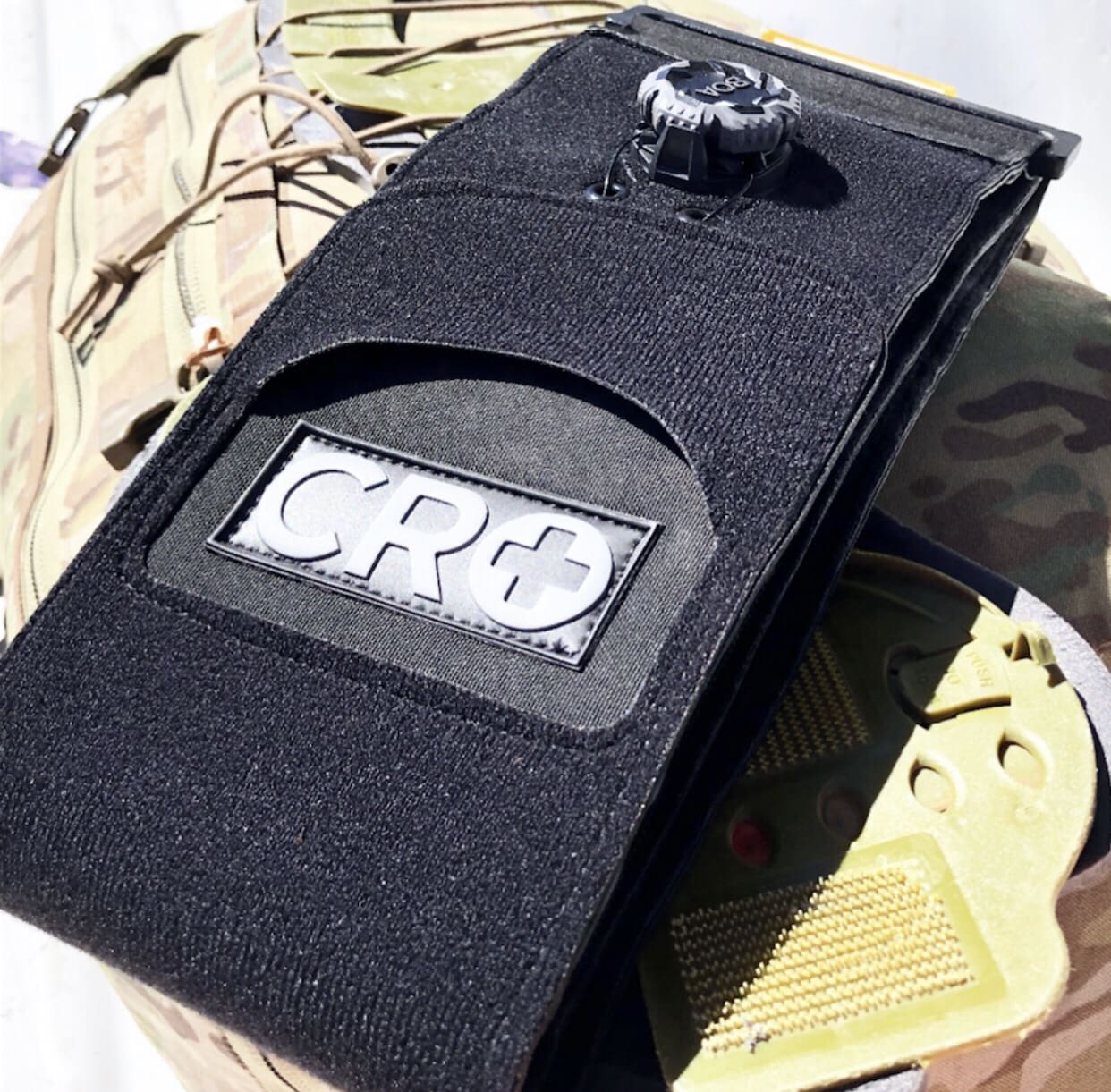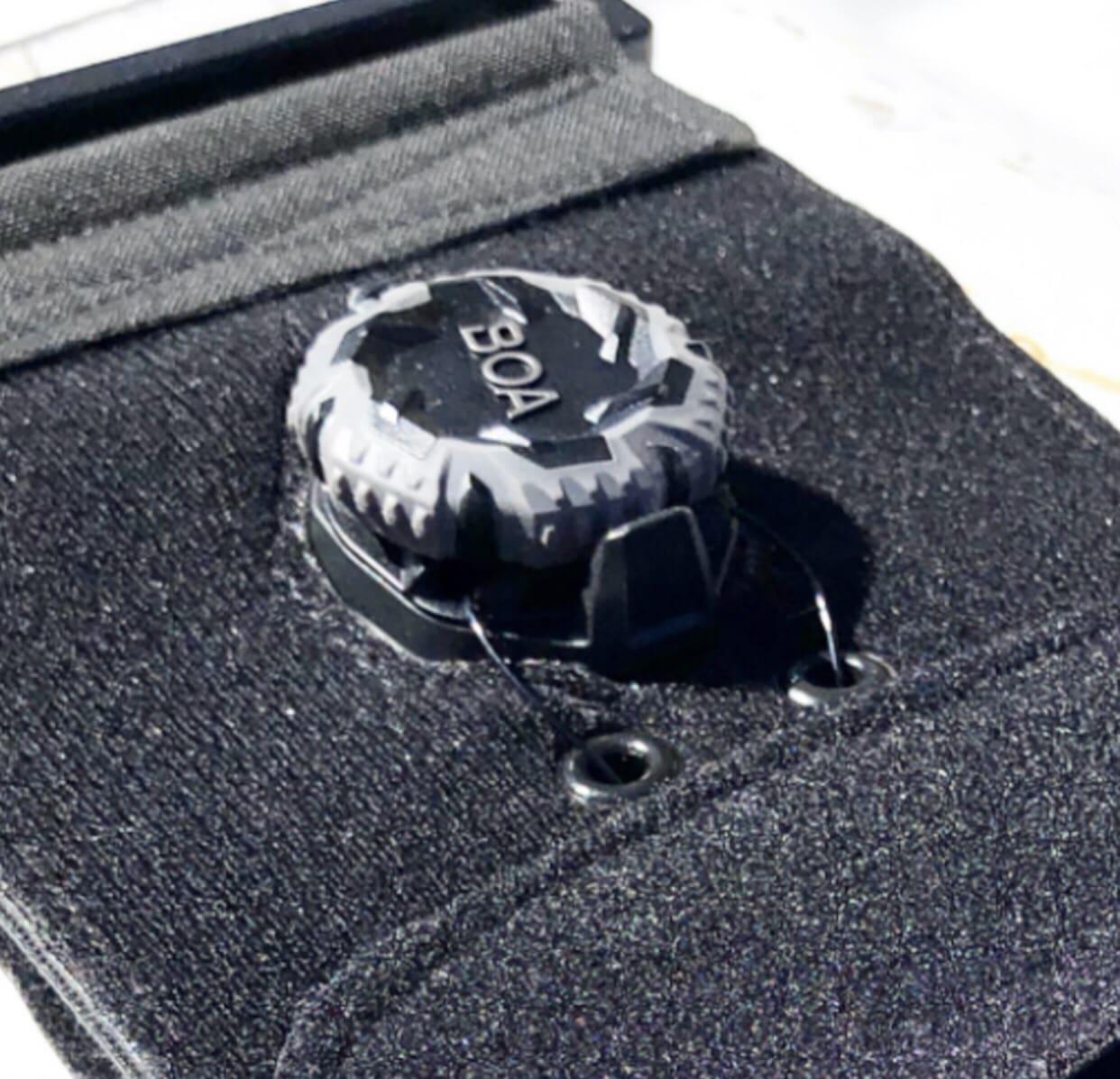CRO Medical was started to identify, design and develop medical devices for combat medics. In January 2017, the Committee on Tactical Combat Casualty Care (CoTCCC) introduced pelvic binding into the protocols due to the high instance of pelvic fractures from common battlefield injuries. 26% of service members that died in OEF/OIF had a pelvic fracture. If you follow the principles of good medicine, carrying a dedicated pelvic binder is an absolute necessity. With this kind of data to support routine pre-hospital pelvic binding, it goes as far as negligence if you don’t carry a binder.

The CRO Pelvic Binder, now FDA approved for commercial sale, went through at least eight versions before arriving at the production model. This design is based off a 5” wrap with a BOA dial for mechanical advantage. We decided to go with BOA due the extremely high tolerances on their hardware and proven track record of reliability. The binder can be placed by a single operator. Binding occurs over the greater trochanters and requires 33 lbs of force at a minimum to “close the book” on an open book pelvic ring fracture, but studies show that over-tightening with the BOA dial is not possible, so there is no risk of causing harm to the patient.

Recently, a third pary medical research group completed the first part of a multi-stage pelvic binding study focused on pelvic binding at point of injury for DoD medical providers. The study shows on a cadaver model, that the CRO binder is the fastest to apply and the preferred option compared to the SAM Pelvic Sling II and the T-POD pelvic binders for special operations medics. Data will be submitted to the Journal of Special Operations Medicine when complete. The CRO Pelvic Binder will be available on GSA and other DoD contract vehicles in the coming weeks. For more information please visit cromedicalgear.com or email operator@cromedicalgear.com
Tags: CRO Medical


“With this kind of data to support routine pre-hospital pelvic binding, it goes as far as negligence if you don’t carry a binder.”
Buy our product or else? Are you a lawyer or a medical professional? How about stick to patient care and leave the liability determinations to the JAG.
That’s kinda what I got out of it.
Luckily, there are 2 seats on the short bus.
They’re not saying “buy our product, or else.” Operational medical providers who derive their protocols from TCCC guidelines must be able to provide the life-saving interventions stipulated in those aforementioned guidelines. So yes, knowing the TCCC protocols, and specifically that they call for application of a pelvic binder when indicated, and not taking steps to carry or use one could be considered negligence.
Whether the provider chooses the SAM sling, TPOD, CRO, or some other binder is immaterial, as long as they have one. And no, a sheet and a stick to not a binder make.
JB: would it be negligent to go on target without a TQ? Fuckn right it would be. you know the data is there to support the statement. And from one ground medic to another, you know that the Cro pelvic binder is the best option on the market. It’s small, lightweight, it’s easily applied and it’s extremly effective. For All the medics who didn’t carry a pelvic binder due to the massive size and amount of space it took up in your med bag… there’s no more excuse. You should be more concerned with the patients lives this device could save rather than making petty jealous attacks on good companies and products because you’re stuck peddling shit like the CROC and battle wrap. It makes you and the products you represent look weak.
Again, Are you a lawyer or a medical professional? How about stick to patient care and leave the liability determinations to the people who actually are experts in negligence. If any of you where half the expert in negligence that I am I would consider your comments valid. I am a professional I have written many articles on SWAT turtles and tactical reloads. So keep the comments to your self!